Crashing is part of cycling as crying is part of love.
Johan Museeuw
- The Lion of Flanders
Crashing is part of cycling as crying is part of love.
Johan Museeuw
- The Lion of Flanders

Conquer the Mountain. Find Your Freedom.

Conquer the Mountain. Find Your Freedom.

If you’re new to mountain biking, starting out can feel a bit overwhelming. But with the right mindset and preparation, you’ll be ready to explore the trails confidently and enjoyably in no time. To help you get started, here are some tips I always share with friends who are new to mountain biking:
Unlocking the perfect mountain bike for your first adventure starts with understanding your riding style – will you conquer descents, cruise scenic paths, or a bit of both? Renting bikes lets you experience different styles (downhill, cross-country) on real trails, while expert advice and test rides at local bike shops help refine your choices.
Pay attention to features like suspension, frame material, and tire size during rentals to see how they impact your ride. Remember, a good fit is crucial – your bike should feel like a comfortable glove! By renting first and considering expert advice, you’ll gain the experience to confidently choose the perfect mountain bike – one that complements your riding style and feels like an extension of yourself.
When choosing a mountain bike, prioritize what most riders consider first:
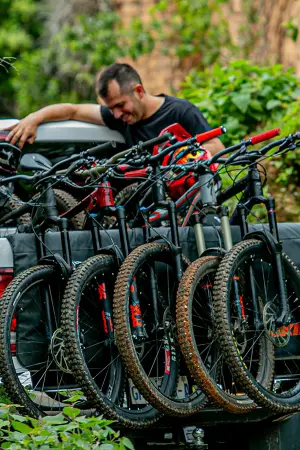
Your riding style is the most crucial factor when choosing a mountain bike, but as a beginner, it’s normal not to know your preferences yet. You might not be sure whether you’re inclined towards downhill, cross-country, enduro, or trail riding until you’ve had some real-world experience.
By trying different types of bikes—like downhill, cross-country, and trail bikes—on various terrains, you’ll get a firsthand feel for what suits you best. Do you enjoy the agility and maneuverability of a trail bike, or do you prefer the speed and efficiency of a cross-country model?
Renting bikes allows you to explore different riding styles without a commitment, helping you discover your preferences through experience. So, take it easy on your first trail rides with whatever type of bike you can rent. The goal is to experiment with different bikes and terrains to find out what resonates with you. Enjoy the journey, and let the trail guide you to your ideal riding style!
Mountain bike prices can vary widely, so setting a realistic budget upfront helps you focus on options within your price range and prioritize essential features.
While having a budget is crucial when buying your first bike, renting offers a valuable opportunity to explore a variety of bikes without a long-term commitment.
By renting, you can experience the difference between premium and budget bikes, understanding the impact of higher quality components and materials on performance and comfort. This hands-on experience allows you to test different component levels, such as shifters and brakes, and see if the additional cost justifies the performance improvements for your riding style.
Renting also provides a chance to avoid common pitfalls. I wish I had rented my first bike instead of impulsively buying the cheapest one available, which lacked the features I needed and led to a less enjoyable riding experience. Conversely, a friend of mine invested thousands in a top-of-the-line bike only to discover it didn’t suit his needs and required several expensive modifications. Renting different bikes before making a purchase can help you avoid these mistakes, ensuring you choose a bike that fits your budget and riding preferences.
When it comes to choosing wheel sizes for mountain biking, 29-inch wheels have become the most popular choice due to their superior ability to handle rough terrain and roll over obstacles with ease. However, 27.5-inch wheels remain a great option for those who value maneuverability, especially on tighter, more technical trails. Testing different wheel sizes (27.5″ vs. 29″) on the trail can help you determine which offers better handling and suits your preferred terrain.
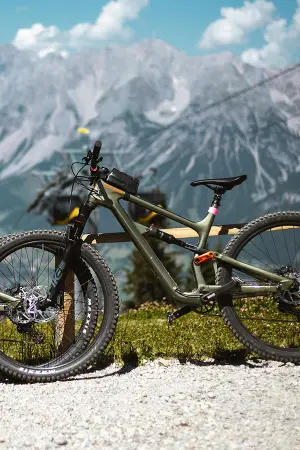
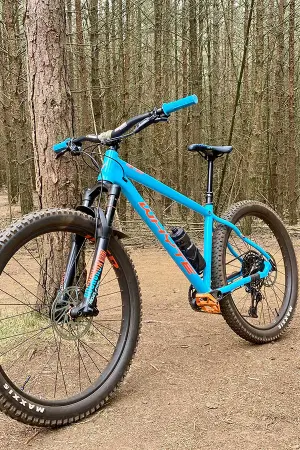
For beginners, I often recommend starting with 27.5-inch wheels. These wheels provide better maneuverability, which is crucial for new riders as they build confidence and skills on less demanding trails.
Beginners typically prioritize a comfortable and controlled ride over speed, focusing on successfully navigating trails at a relaxed pace. As their skills and confidence grow, they can experiment with 29-inch wheels, which offer improved rolling capability over technical features.
This transition can boost their confidence even further and encourage a greater love for mountain biking, making them more eager to tackle challenging trails.
Full-suspension bikes provide superior comfort and control on technical trails, making them a popular choice among many mountain bikers. They excel at absorbing shocks from rough terrain, which helps maintain traction and stability, especially on challenging descents.
On the other hand, hardtail bikes, which have suspension only at the front, are lighter and more affordable. They are ideal for smoother trails and for riders who prioritize climbing efficiency and speed.
For beginners, I often recommend starting with a hardtail bike. Hardtails offer a more direct connection with the trail, allowing new riders to fully experience the terrain’s roughness and develop fundamental skills.
This exposure helps them understand the dynamics of mountain biking and improves their ability to handle different conditions. After gaining some experience and confidence, I suggest they try out a full-suspension bike.
The enhanced comfort and control provided by full suspension quickly become apparent, helping them decide which type of bike best suits their riding style and future adventures.
Aluminum frames strike an excellent balance between affordability and weight, making them the most popular choice among mountain bikers. They are robust and durable, providing a good riding experience without breaking the bank.
Carbon fiber frames are lighter and offer a smoother ride, but they come at a higher cost. Steel and titanium are niche options; steel is known for its strength and comfort, while titanium offers a premium combination of lightness and durability, though both tend to be more expensive and less common.
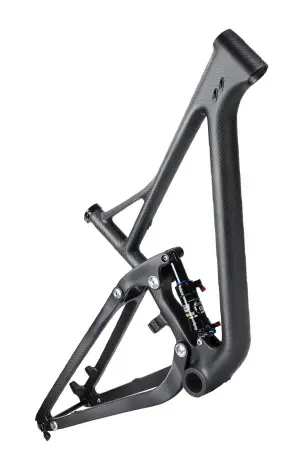
For beginners, I often recommend starting with aluminum frames, especially when renting bikes. Aluminum frames, being slightly heavier, transmit more of the trail’s vibrations, giving riders a more tactile sense of the terrain’s roughness.
This helps new riders develop a better feel for mountain biking and adapt more quickly to the challenges of off-road trails. Once they have a good grasp of the basics, trying out a bike with a carbon frame can provide a smoother and more comfortable ride, highlighting the differences in material performance.
Experiencing both types of frames firsthand helps beginners make an informed decision when it comes time to invest in their own bikes.
Key components such as shifters, brakes, and wheels significantly influence a bike’s performance and durability. While these features often come into focus after selecting the core aspects like frame and suspension, they are crucial for enhancing the overall riding experience.
Higher quality components typically offer smoother operation, better control, and reduced weight, though they come with a higher price tag.
For beginners, I recommend focusing initially on selecting a drivetrain that suits their needs, especially for tackling technical climbs. The right drivetrain can make a significant difference in efficiency and comfort when navigating challenging terrain.
I also suggest trying a bike equipped with a dropper seat post. This feature allows for quick adjustments to the saddle height, providing better maneuverability and control on the trails.
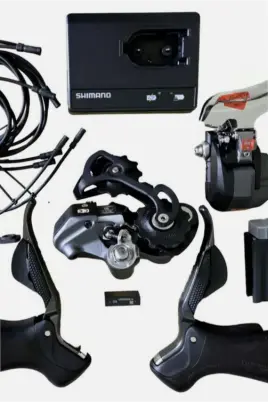
Once they’ve gained some experience and confidence on the trails, they can then consider upgrading other components to suit their riding style and preferences.
While the fit is crucial for a comfortable and efficient ride, it’s often best determined after considering other factors like frame material and suspension. Test riding different bikes within your chosen category is essential to finding the right fit.
When renting a bike, start by standing next to it to ensure the seat height aligns roughly with your hip. When seated, your leg should be slightly bent with your foot on the pedal at the bottom of the stroke, allowing for efficient pedaling and optimal power transfer.
A dropper seat post on a rental bike is highly beneficial as it lets you adjust the seat height on the fly, particularly useful when encountering technical features on the trail.
Whether you prefer 125mm or 170mm travel will depend on your maximum ride height, so experimenting with different seat heights during your ride is the best way to determine the most suitable dropper post-travel.
While other aspects of bike geometry, such as reach, stack, head angle (slack or steep), chainstay length, and seat angle, are all important, they may not be as critical for beginners renting their first bike.
However, understanding these elements becomes crucial when you’re ready to purchase your own bike. For detailed guidance on bike geometry and fitting, check out our comprehensive guide here.
Renting allows you to fully experience what different mountain bikes can offer. I wished I had known this when I was starting out with my journey of mountain biking.
Instead of just purchasing the cheapest bike I could find and feeling awkward with the bike, I could have rented first and fully enjoyed different bikes before committing to purchase my first bike.
As I have seen from my friends compared to my experience. The joy of buying your first bike that fits like a glove is different from buying a bike and hoping that it will be a good fit with you on the trail.
In addition to a bike, you’ll need some essential gear for a safe and enjoyable ride. Key items include:
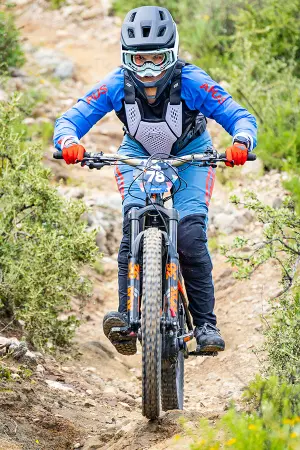
A helmet is your most critical piece of safety gear, providing essential protection for your head in the event of a fall. Ensure it fits snugly and securely to offer maximum protection.
For added safety, especially on challenging trails, consider a full-face helmet, which provides extra coverage for your face and jaw. Whether you’re tackling rugged terrain or cruising on easier paths, a well-fitted helmet is indispensable for a safe and enjoyable ride.
Gloves are essential for maintaining a secure grip on the handlebars, especially when your hands get sweaty. They also provide vital protection against scrapes and blisters, whether you’re navigating rough terrain or taking an unexpected tumble.
Opt for gloves that are breathable and fit well to ensure maximum comfort and control during your ride. The right pair of gloves can make a significant difference, enhancing your grip and safeguarding your hands throughout your biking adventures.
Knee and elbow pads offer valuable impact protection, especially for beginners building confidence. Consider additional protection like chest or back armor for more aggressive riding styles.
Staying hydrated is crucial. A hydration pack allows for convenient on-the-go access to water, while a water bottle with a secure cage is a good alternative for shorter rides.
Shield your eyes from sun, dust, small insects, and trail debris. Choose a high-quality pair for optimal protection and clarity.
Start on beginner trails to focus on enjoying the ride and completing the trail. Many places offer beginner courses or guided rides to help you gain confidence and improve your technique.
Some riders prefer to learn alongside friends, sharing the joy and challenges of their first trail experiences, which can create lasting memories. Looking back on our initial ride, I fondly recall moments when we almost gave up and walked most of the trail instead of riding.
We conquered the trail… mostly. We might have been missing a few key points, but hey, we made it (and learned a valuable lesson about preparation for next time)! Gruesome? Absolutely. Fun? Totally worth it! Visit our guide for essential tips for new riders.
Are you like my friends and colleagues who I’ve repeatedly invited to join me for a trail ride, only to have them finally try mountain biking with me? If not, consider joining a mountain biking club or group. They almost always welcome newcomers warmly.
Riding with others offers valuable support, encouragement, and the chance to learn from experienced riders. It’s also an excellent way to forge new friendships and discover exciting trails.
Remember, mountain bikers are some of the friendliest people you’ll meet, much like hikers. We love to greet and acknowledge fellow riders and anyone else we encounter along the trail.
While we may be aggressive riders, tackling challenging trails with enthusiasm, we are also a fun and welcoming community. Whether you’re a seasoned biker or a newcomer, you’ll find camaraderie and support among mountain biking enthusiasts.
Mountain biking is not just about thrill and adventure; it also involves a sense of responsibility towards the environment and other trail users. Here are some key etiquette and safety tips:
Explore our in-depth guide on yielding the right of way.
If you’re new to mountain biking, embarking on this adventure might seem intimidating at first. However, with the right preparation and approach, you’ll soon find yourself ready to hit the trails confidently.
Remember, choosing the right bike tailored to your riding style is key. Having the seat post around your waist level almost guarantees that you can ride it comfortably.
Whether you prefer tackling descents, cruising scenic paths, or a bit of both, renting bikes allows you to explore various options before making a commitment.
By starting with beginner trails and learning essential skills, you’ll gradually build your confidence and discover the joy of mountain biking.
Joining a community of riders also enhances your experience, providing support, camaraderie, and opportunities to explore new trails together. Embrace the journey, enjoy the trails, and let each ride bring you closer to mastering this exhilarating sport.
Do you also agree that mountain bikers are made of a wacky bunch and are friendlier than most road bikers? How many grumpy or snobbish riders have you encountered on your rides?
What are your thoughts on renting mountain bikes or buying a second-hand bike for your first ride? How was your experience on your first trail adventure? We’d love to hear your stories and insights in the comments below!